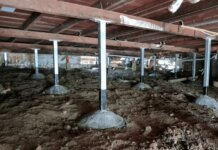Air conditioners unquestionably play an essential part in our lives. However, like any other equipment, they require regular maintenance to work well. Usualy Air conditioner manufacturers frequently build durable, high-quality products that last for years. An air conditioning unit cools the air within your house or enclosed area by eliminating heat and humidity. It removes the undesired heat and humidity outdoors and returns the cooled air to the internal environment. This process repeats itself until your home reaches the appropriate temperature.
Common Problems of Air Conditioning Unit
Air conditioners are of major use in Australia and is not considered as luxury anymore. To keep up with the weather here the AC must be serviced regularly and kept in good condition. Some of the faults that you can spot with your AC systems are mentioned below:
1. Leaking Refrigerant
Most refrigerant leaks are difficult for homeowners to detect because they frequently emerge in coolant lines. If your air conditioner’s refrigerant level is low, either it was set up wrongly or leaks. Remember that your air conditioning system performs best and is most efficient when the refrigerant charge complies with the manufacturer’s specifications. Leaks of refrigerants can potentially be hazardous to the environment. Lines and connections in an air conditioning system weaken with time, resulting in refrigerant leaks.
2. Faulty Circuit Break or Fuse
When your air conditioner fails, you should first check your circuit breaker and fuse. This is caused mainly due to poor AC installation, and the compressor and fan controls are subject to wear and tear, especially if you repeatedly turn on and off the system. Allow your air conditioning system to cool down for 15 minutes before replacing the fuse or resetting the breaker. You may have triggered a high-pressure limit switch if this does not resolve the issue. At this time, we recommend that you contact a professional technician. Choosing the cheapest handyman to install your air conditioner is not good.

3. Strange Smell
Soemtimes burning odour is one indicator of AC difficulties, while homeowners also detect musty scents. These odours may emanate from the vents or while you’re near the central AC unit. Electrical odours might suggest a wiring issue with the motor. Examine your air filters closely. The system might overheat while your air filters get clogged, resulting in burning smells. Strange odours are linked to poor drainage. Replace them if they appear to be unclean. Regularly cleaning your home’s ducts and air conditioner is an effective strategy to avoid unwanted odours.
4. Damaged Parts in the air conditioning system
Your air conditioning system is in danger of early demise if it is over five years old and cycles on and off often. The compressor is the heart of an air conditioning system since refrigerants can conduct heat exchange and therefore chill your area. A low refrigerant level might cause the compressor to fail. A tripped circuit breaker and broken fan blades are frequently the cause. It’s also conceivable that the blower belt has worn out and should be replaced.
5. Weird Noise
Strange vibrations, screaming, or grinding noises in the air conditioning system should raise the alarm. A worn or twisted belt frequently causes screeching noises. This indicates a severe problem that must be addressed immediately. Crushing noises are particularly harmful in air conditioners because they often suggest the problem is motor-related. These loud noises disappear after the underlying issue is resolved.
You don’t have to be an expert in air conditioners to detect problems. A qualified technician should repair any leaks, test the repair, and charge the system with the appropriate quantity of refrigerant. Knowing the most frequent issues with air conditioners may go a long way toward averting malfunctions and calling for a professional technician. Annual maintenance may typically detect worn or broken parts before emergency repairs are required. The air conditioning professionals inspect belts and maintain components lubricated as part of the routine maintenance, preserving the compressor unit.








